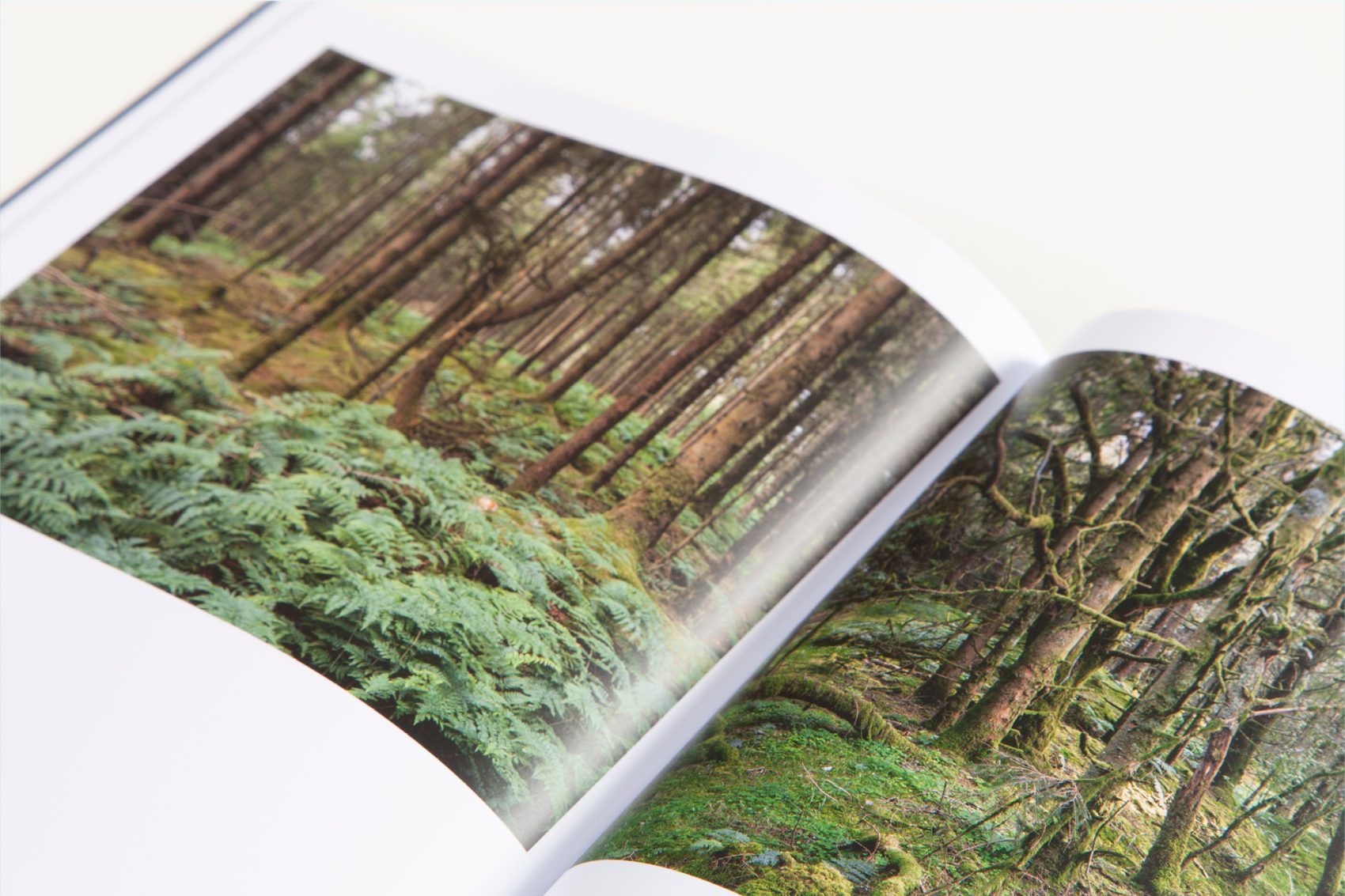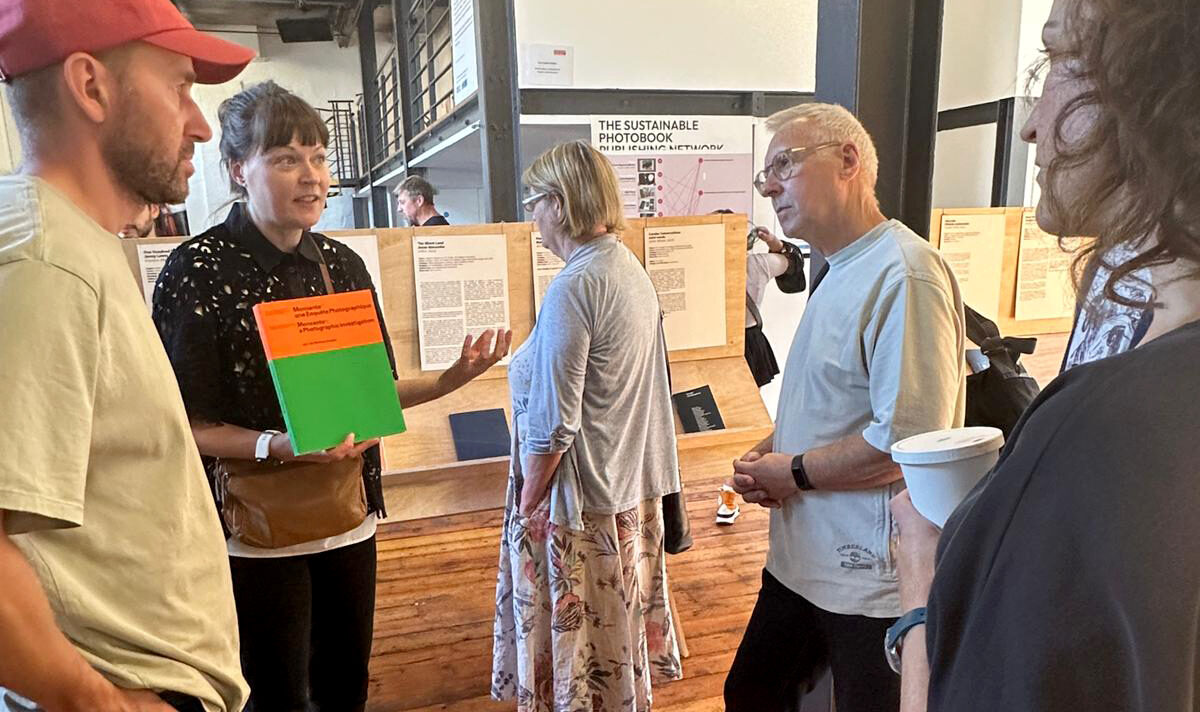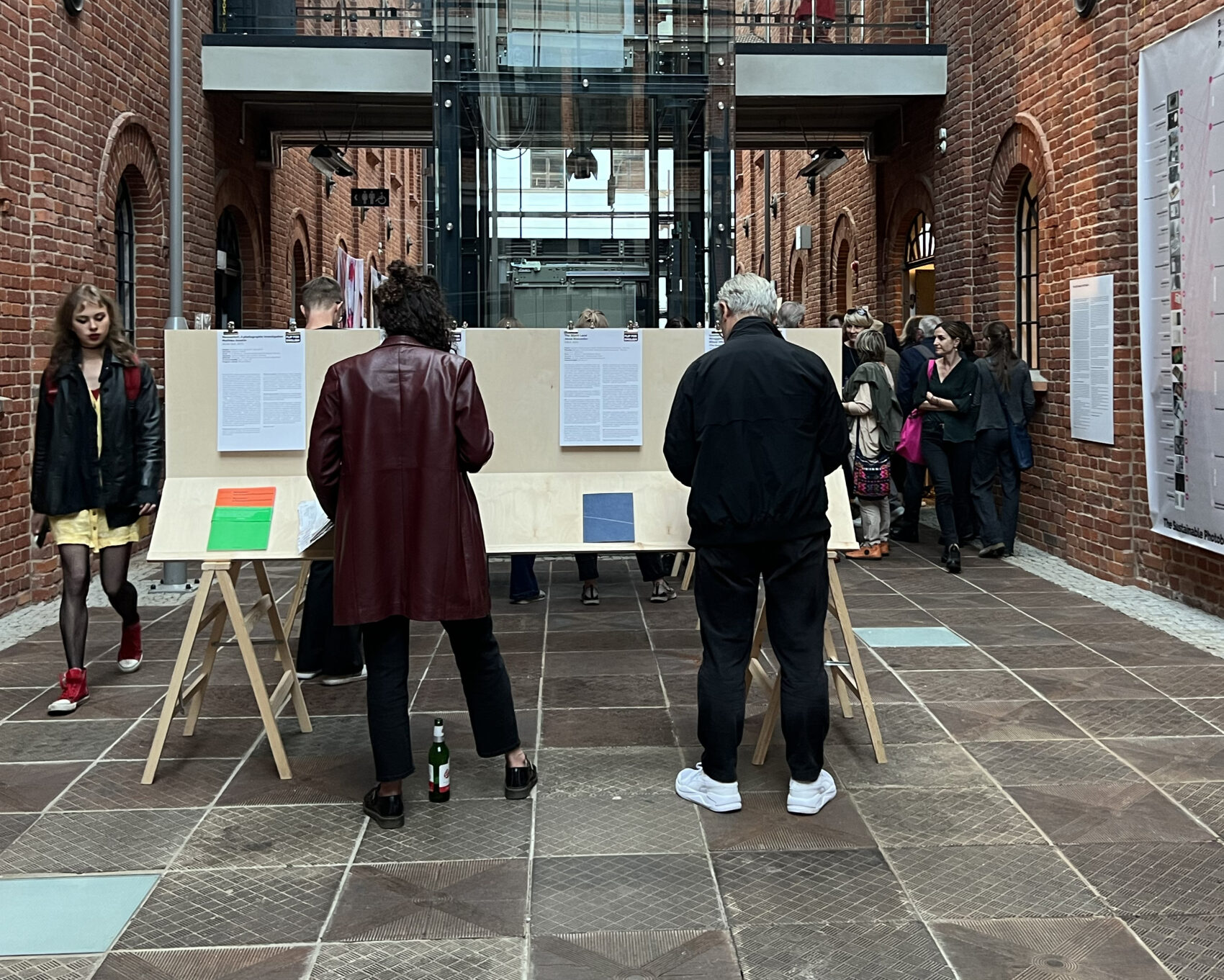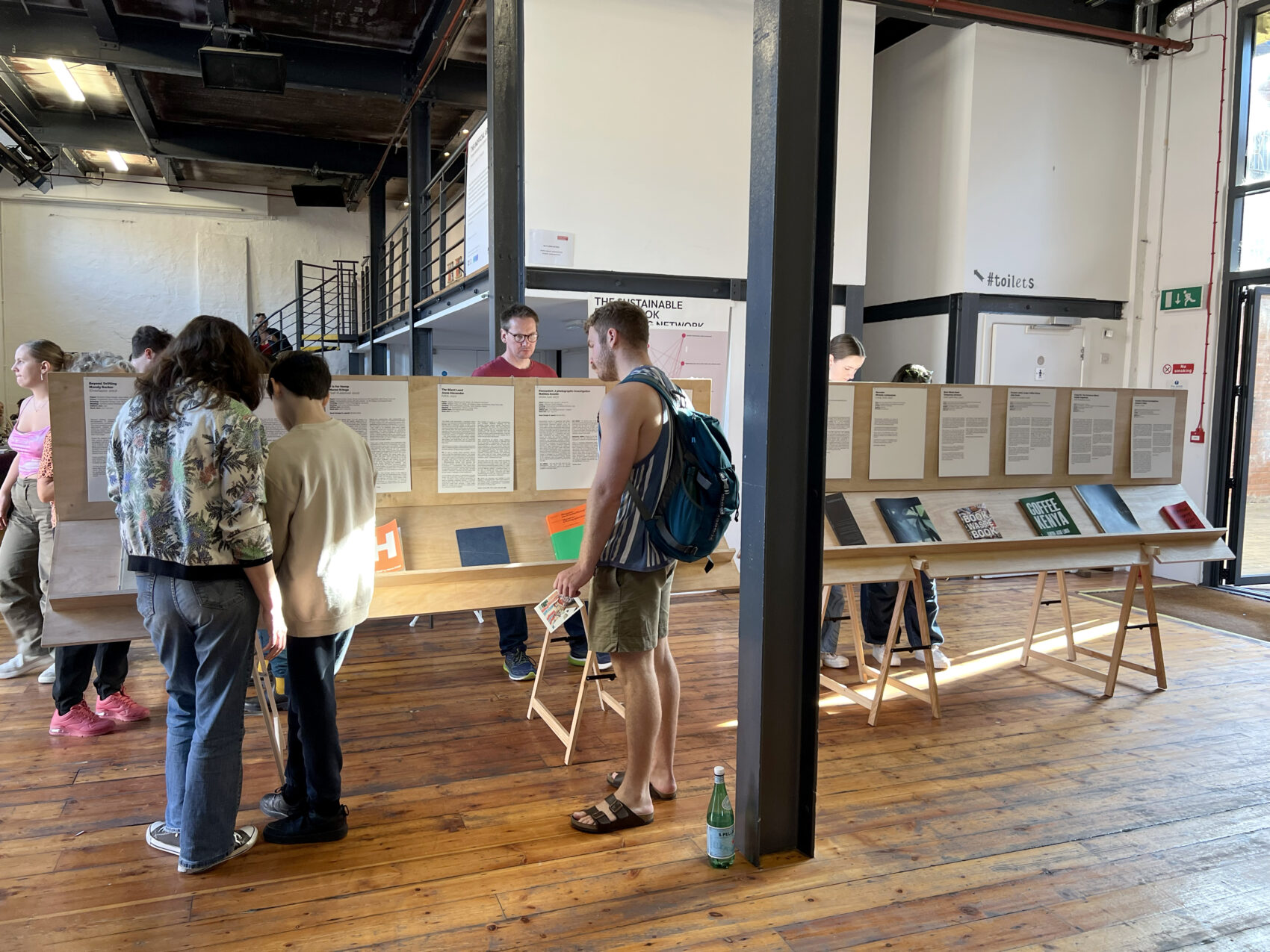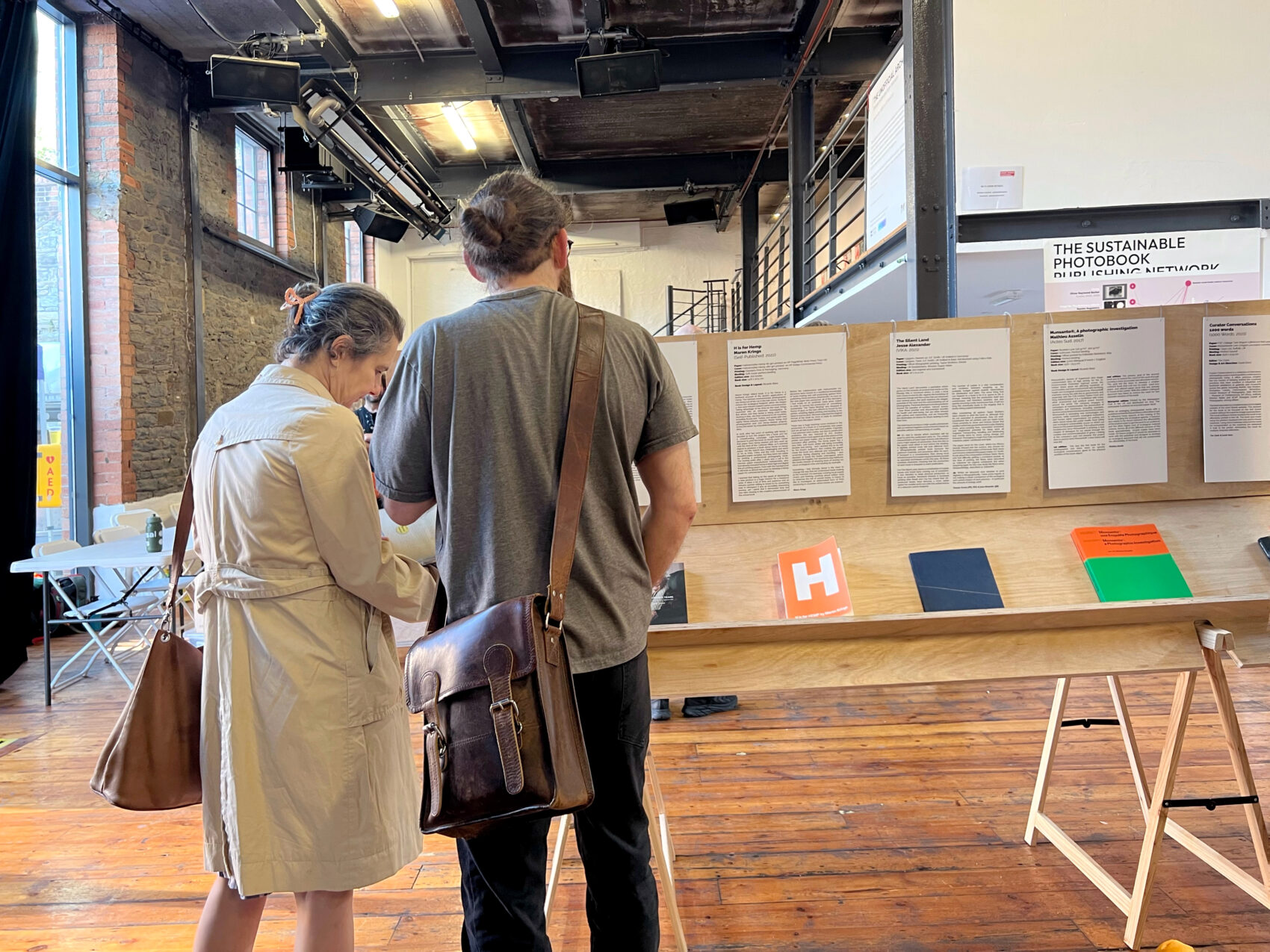Sustainable Photobook Network
The Reading Room
This reading room seeks to engage photobook makers and consumers in an urgent discussion about sustainability. How are we making books? How are we distributing books? How can we make responsible choices as a consumer? — Written by Tasmin Green
The photobook industry has grown exponentially over the years, there are now photobook fairs and awards on every continent, as well as a broad range of publishers, from small imprints and self-publishers to medium and large-scale dedicated photobook publishers. Photobooks as a collectable item have given rise to a growing pool of private collectors as well as dedicated public collections within established museums and institutions. During the pandemic the photobook economy boomed, with publishers reporting record sales. The portability of the book means that they can travel to every corner of the world (although often at prohibitively high cost). Given its growing size and influence, the photobook community has a responsibility to think about how we design, make, and distribute our books, yet the urgent topic of sustainability is nowhere near the forefront of recent discussions.
To understand the relevance of thinking about environmentally conscious practices, we need to consider how books are made and what happens to them when they are no longer needed. The materials used to make and distribute books (eg.paper, printing, inks and packaging) all use valuable resources and industrial processes that create waste and are potentially harmful to the planet. Publishing is the third largest industrial greenhouse emitter when it comes to pulp and paper. Forty percent of solid waste in landfills is paper. Thinking more responsibly about what materials are used, where they come from and what happens to them at the end of their life can play a part in establishing an environmental balance.
A key SPP network initiative is a series of case studies on photobooks. These have included books by Mandy Barker, Oliver Raymond Barker, Sayako Sugawara, Half Letter Press, Loose Joints, Folium, and the Sustainable Darkroom. The majority of these books were printed in their country of origin and involved nuanced thinking about materials, equipment, processes, packaging and transportation.
This hands-on reading room showcases a selection of these case study books. The physical interaction makes tangible the scale, materiality and production of sustainable choices. Alongside the exhibition we will run a series of events to create discussion and to share practical information.
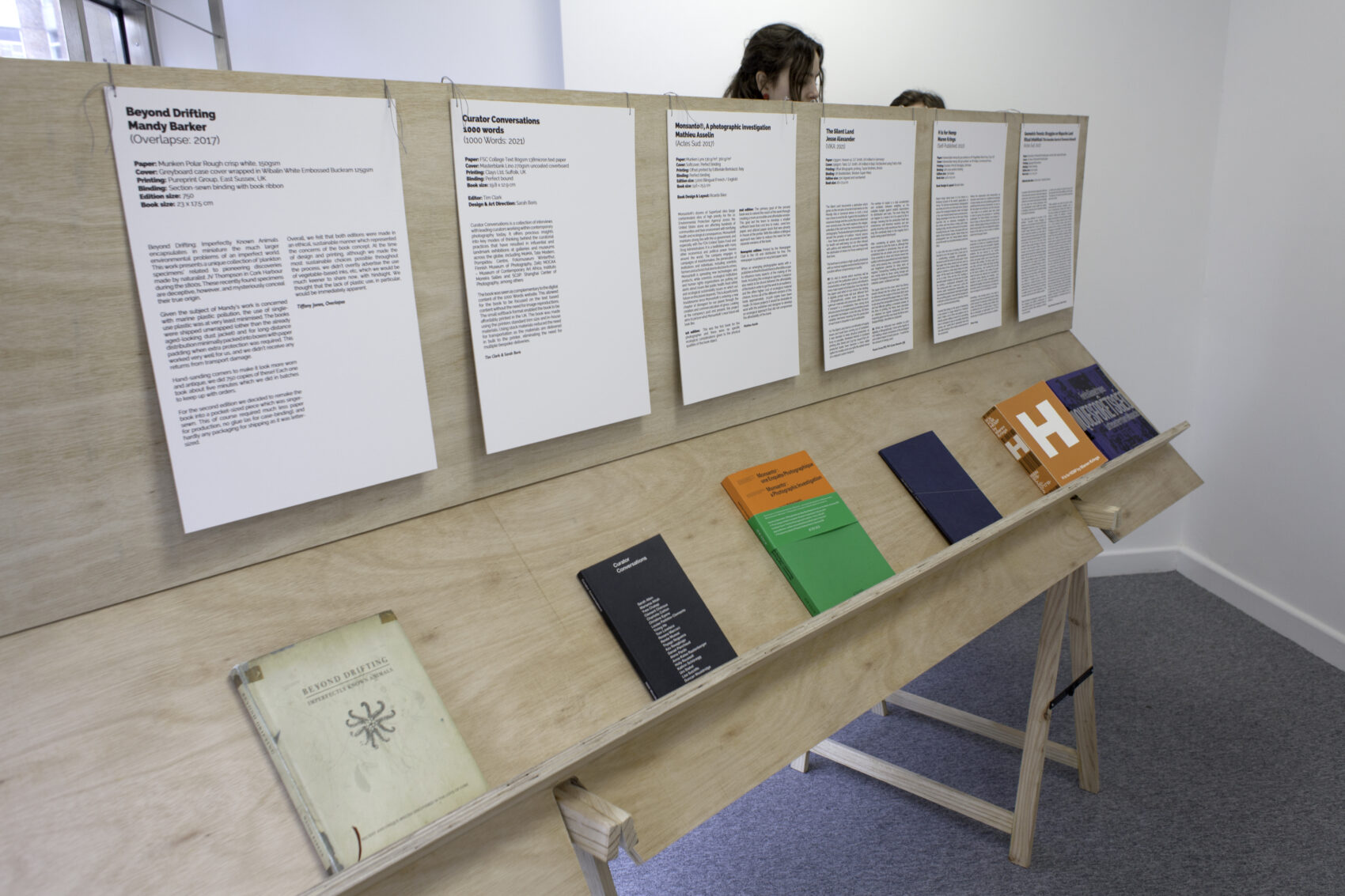
The Sustainable Photobook Publishing (SPP) network
The Sustainable Photobook Publishing (SPP) network is a group of photographers, publishers, academics and writers who discuss and share knowledge on issues around environmentally conscious approaches to photobook publishing in printed form. All of us have different starting points and ideas of what constitutes a sustainable practice. Through ongoing conversations, we spark new ways of thinking, and develop resources that support and actively encourage individual practitioners in their search for a more environmentally conscious approach to photobook publishing.
Our values and approach
- Working together – valuing cultural diversity, autonomy, transparency, accountability, and mutual trust
- De-mystifying materials and processes – shedding light on supply chains and making processes
- Creating a safe space for discussion – encouraging broad reaching, reflective, critical and open ended conversations
- Identifying and discussing the challenges – encouraging the sharing of lessons learned, and opportunities for change
- Increasing access to knowledge – developing open source resources for anyone and everyone to access
- Inspiring creative approaches – uncovering and sharing examples of sustainable practices
- Building networks – connecting local, national and international networks
For more information, including a great diagram of sustainable considerations when making your own photobook, please visit the Manuel Editions website.
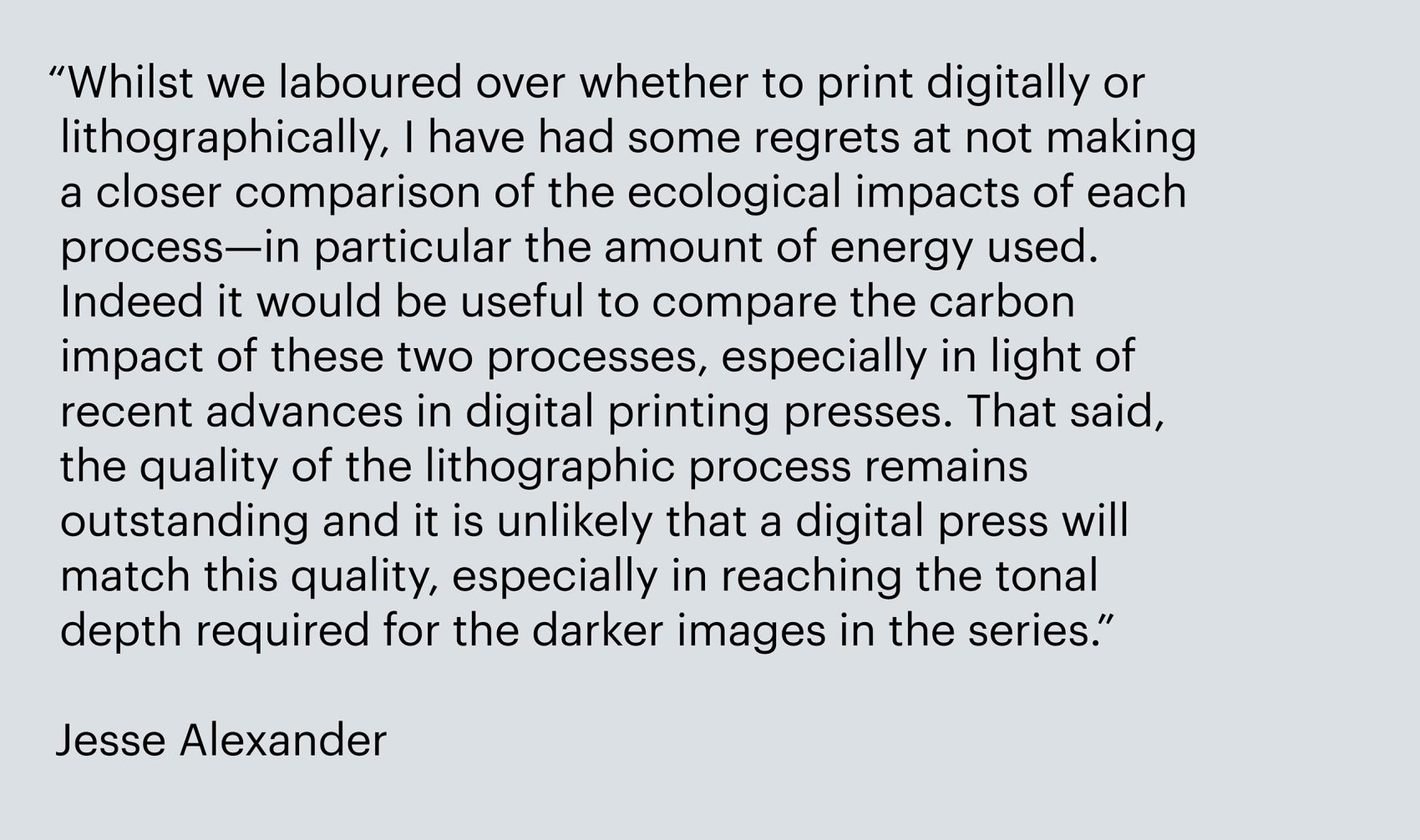
List of Books
- NECK volume 3. 38 contributors (NECK: 2022)
- The Problem Horse & Other Stories, Julie Sleaford (Self published: 2022)
- Losing Ground, David O’Mara (Self-published: 2018)
- Iconoclastic Inventory of the Chilean Insurrection, A.A.V.V. (SED Editorial: 2021)
- One Hundred Years, Jenny Lewis (Hoxton Mini Press: 2021)
- Geometric Forests: Struggles on Mapuche Land, Ritual Inhabitual (Actes Sud: 2022)
- H is for Hemp, Maren Krings (Self-published: 2022)
- The Silent Land, Jesse Alexander (VIKA: 2021)
- Monsanto®, Mathieu Asselin (Actes Sud / Verlag Kettler: 2017)
- Curator Conversations, 1000 Words (1000 Words: 2021)
- Beyond Drifting, Mandy Barker (Overlapse: 2017)
- Creative Climate Investigations, Climate & Cities (Folium: 2022)
- Contranatura, João Pedro Lima(Selo Turvo: 2022)
- re.source, The Sustainable Darkroom (Folium: 2022)
- Book Waste Book, Temporary Services (Half Letter Press: 2022)
- Scale & Substance, Tamsin Green (manual.editions: 2022)
- Recorder, Miranda Lichtenstein (Loose Joints: 2021)
- Fastidiosa, Jean-Marc Caimi & Valentina Piccinni (Overlapse: 2022)
- The Space Between Us, Ed Sykes (Self Published: 2021)
- this is how the earth must see itself, Tamsin Green (manual.editions: 2021)
- Kunywa Jasho Langu: Coffee Kenya, Jake Green (Leyton of London: 2018)
- (Copy) 80. The Schwarze Mönch, Sayako Sugawara (Self Published: 2021)
- Trinity, Oliver Raymond Barker (Loose Joints: 2021)
